|
| |
|
| |
| Reflectivity |
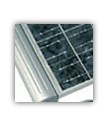 |
|
Aluminum is an excellent reflector of heat, light and electromagnetic waves. |
|
|
| |
|
|
| |
| Thermal Conductivity |
 |
|
Aluminum's thermal conductivity is remarkable and promotes its use in diverse manufacturing sectors, such as kitchen utensils, solar collectors, refrigeration components, disks and brakes. Aluminum is also used in the electronic industry, to desalinate sea water and in all fields employing heat exchange devices |
|
|
| |
|
|
| |
| Light Weight |
 |
|
Aluminum's light weight makes it particularly suitable for all means of transportation: road (30 to 50% lighter), rail, water and air (all airplanes are made of aluminum alloy). This property makes it a metal of choice for electric power transmission; with equal resistance, a wire made of aluminum alloy is twice as light as copper.
Aluminum is also much appreciated in various mechanical applications, particularly for components of moving machines, such as engines and robotic devices. |
|
|
| |
|
|
| |
| Workability |
If by workability one understands all the methods by which a material may be destructively or non-destructively shaped, joined and finished, then aluminium must rate as the most versatile of all the metal. Aluminium may be cast by all known foundry methods; it can be rolled to any thickness down to foil thinner than tissue paper, it can be stamped, drawn, spun, roll-formed, or forged; there is almost no limit to the different cross-sectional shapes in which aluminium may be extruded. All aluminium alloys can be machined, usually easily and rapidly, at maximum machine speeds.
|
|
|
| |
|
|
| |
| Recyclable |
 |
|
Aluminum can be recycled indefinitely. Secondary aluminum manufacturing requires only 5% of the electricity necessary to produce the primary metal.
|
|
|
| |
|
|
| |
| Non-Toxicity |
The non-toxicity of aluminium and its compounds was noted early in the development of the industry. Because of its non-contaminative characteristics, a great deal of aluminium equipment is used in the processing of food and beverages. Aluminium is not adversely affected by steam sterilizing and cleaning and it will not harbor insects or bacteria. The non-toxicity of aluminium is particularly advantageous in the handling of yeasts and other micro-biological products.
|
|
|
| |
|
|
| |
| Strength |
| The use of aluminium for space vehicles and aircraft structures probably represents the most exacting application of the highest strength aluminium alloys where weight saving is the primary requirement. While the list of applications for aluminium broadly based on lightness benefits is enormous, it is specifically lightness combined with strength which accounts for the wide use of aluminium alloys for transportation equipment generally and for moving and movable parts. |
|
|
| |
|
|
| |
| Ductility |
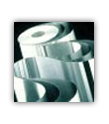 |
|
Aluminum is easy to process, no matter what method is used (milling, drilling, shearing, forging or spinning). It is easy to shape, making it ideal for extruding, strip rolling, bending or other plastic hot or cold fabrication methods. It can also be soldered and glued.
|
|
|
| |
|
|
| |
| Resistance |
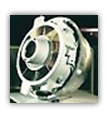 |
|
In its pure state, aluminum is soft and flexible. Its resistance can be increased by alloys or cold treatment.
|
|
|
| |
|
|
| |
| Corrosion Resistant |
 |
|
A compact layer of oxide forms naturally on the surface of aluminum, protecting it from atmospheric corrosion and giving aluminum products a very long life. The visual aspect of the material can be further improved by anodizing or heat treatment. Maintenance of aluminum products is minimal, even when unprotected.
|
|
|
| |
|
|
| |
| Diversity of the Alloys |
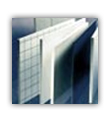 |
|
Aluminum can be alloyed with several other metals, such as copper, magnesium, manganese, silicon, lithium and zinc, to further improve certain properties.
|
|
|
| |
|
|
| |
| Electrical Conductivity |
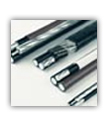 |
|
Aluminum is an excellent electrical conductor. Pure aluminum and certain alloys, in the form of bars or tubes, are commonly used as conductors in many electrical applications.
|
|
|
| |
|
|
| |
| Inertness |
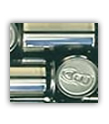 |
|
The chemical inertness and metallic stability of aluminum make it an excellent choice for product conservation
|
|
|
| |
|
|
| |
| Surface Treatment |
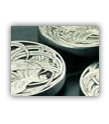 |
|
Surface treatments of all kinds make it an ideal metal for aesthetic or decorative products
|
|
|
| |
|
|
| |
| Colour Treatment |
 |
|
Aluminum takes colour well and is suitable for all types of printing.
|
|
|
| |
|
|